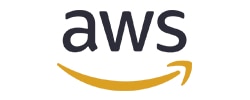May 14, 2024
Delivering a Modernized Tech Experience for State and Local Government
Cloud migration and automation offer states and municipalities the tools they need to provide employees and citizens with updated digital services.
With so many innovative forms of technology gaining widespread attention and adoption, opportunities for modernization abound. For state and local governments, however, that kind of technology enablement can be hindered by additional challenges. Legacy technology must be updated to pave the way for innovative efforts, and many government entities don’t have the funding to make the large-scale changes required to modernize. Starting from scratch to create the kind of foundation that will support automated processes and drive IT transformation simply isn’t an option. The good news is that these agencies don’t need to do it all on their own. Third-party assistance can provide the kind of assessment, consulting, solutions and managed services needed to provide employees and citizens with the digital experience they have come to expect.
Learn how CDW can help deliver a modernized digital government experience.
With so many innovative forms of technology gaining widespread attention and adoption, opportunities for modernization abound. For state and local governments, however, that kind of technology enablement can be hindered by additional challenges. Legacy technology must be updated to pave the way for innovative efforts, and many government entities don’t have the funding to make the large-scale changes required to modernize. Starting from scratch to create the kind of foundation that will support automated processes and drive IT transformation simply isn’t an option. The good news is that these agencies don’t need to do it all on their own. Third-party assistance can provide the kind of assessment, consulting, solutions and managed services needed to provide employees and citizens with the digital experience they have come to expect.
Learn how CDW can help deliver
a modernized digital government experience.

While many state and local governments have digital modernization initiatives, immense variation exists in where those journeys have led and how quickly they are progressing. The pandemic revealed widespread deficiencies in legacy technologies and the need to update infrastructure to deliver digital tools and services to employees and citizens. However, before adopting cloud-based solutions, automation, artificial intelligence (AI) and other solutions, governments first need to determine their objectives, assess their environments and chart the best path forward.
In many cities and states, that’s easier said than done. A huge spectrum exists between governments that prioritize digital transformation and those that lag behind in IT skills and investments. Moreover, decision-makers may be unsure what IT options are available, and which will deliver the best outcomes in a specific environment. For example, each of the three main public clouds has attributes that make it better suited for certain applications and workloads, so it’s essential to choose the one that aligns with organizational goals.
Decision-makers may overlook the importance of establishing a strong foundation before pursuing certain tactics. For instance, launching an AI chatbot to help citizens may be ineffective if the agency hasn’t first tackled data governance. An outdated network can hamper Wi-Fi initiatives and compromise cybersecurity. Before moving to the cloud, entities need a handle on DevOps, preferably DevSecOps, and the skills to manage deployments. Governments may also lack a holistic strategy to guide IT investments; instead, deployments may occur piecemeal, often in response to immediate concerns.
87%
The percentage of state and local IT decision-makers who say legacy applications prevent their organizations from delivering modern services
Source: MeriTalk, “Modernizing State & Local Government with Cloud,” March 2022
Governments are more likely to achieve success when they start by identifying key outcomes and assessing the IT environment before selecting technology tools. An expert partner can help by making recommendations and creating a staged plan for serving citizens and employees in a secure, efficient and cost-effective way. With the right roadmap, entities can build strong foundations and stay flexible enough to adapt to future technologies.
While many state and local governments have digital modernization initiatives, immense variation exists in where those journeys have led and how quickly they are progressing. The pandemic revealed widespread deficiencies in legacy technologies and the need to update infrastructure to deliver digital tools and services to employees and citizens. However, before adopting cloud-based solutions, automation, artificial intelligence (AI) and other solutions, governments first need to determine their objectives, assess their environments and chart the best path forward.
In many cities and states, that’s easier said than done. A huge spectrum exists between governments that prioritize digital transformation and those that lag behind in IT skills and investments. Moreover, decision-makers may be unsure what IT options are available, and which will deliver the best outcomes in a specific environment. For example, each of the three main public clouds has attributes that make it better suited for certain applications and workloads, so it’s essential to choose the one that aligns with organizational goals.
87%
The percentage of state and local IT decision-makers who say legacy applications prevent their organizations from delivering modern services
Source: MeriTalk, “Modernizing State & Local Government with Cloud,” March 2022
Decision-makers may overlook the importance of establishing a strong foundation before pursuing certain tactics. For instance, launching an AI chatbot to help citizens may be ineffective if the agency hasn’t first tackled data governance. An outdated network can hamper Wi-Fi initiatives and compromise cybersecurity. Before moving to the cloud, entities need a handle on DevOps, preferably DevSecOps, and the skills to manage deployments. Governments may also lack a holistic strategy to guide IT investments; instead, deployments may occur piecemeal, often in response to immediate concerns.
Governments are more likely to achieve success when they start by identifying key outcomes and assessing the IT environment before selecting technology tools. An expert partner can help by making recommendations and creating a staged plan for serving citizens and employees in a secure, efficient and cost-effective way. With the right roadmap, entities can build strong foundations and stay flexible enough to adapt to future technologies.
Full Steam Ahead
88%
The percentage of state CIOs who are accelerating cloud adoption across operations
Source: National Association of State Chief Information Officers and Accenture, “2023 Capitals in the Cloud Volume 2: Changing the Cloud Conversation,” October 2023
51%
The percentage of state and local IT decision-makers whose organizations are accelerating adoption of Software as a Service
Source: MeriTalk, “Modernizing State & Local Government with Cloud,” March 2022
74%
The percentage of state CIOs for whom security is the top benefit provided by cloud computing
Source: National Association of State Chief Information Officers and Accenture, “2023 Capitals in the Cloud Volume 2: Changing the Cloud Conversation,” October 2023
Full Steam Ahead
88%
The percentage of state CIOs who are accelerating cloud adoption across operations
Source: National Association of State Chief Information Officers and Accenture, “2023 Capitals in the Cloud Volume 2: Changing the Cloud Conversation,” October 2023
51%
The percentage of state and local IT decision-makers whose organizations are accelerating adoption of Software as a Service
Source: MeriTalk, “Modernizing State & Local Government with Cloud,” March 2022
74%
The percentage of state CIOs for whom security is the top benefit provided by cloud computing
Source: National Association of State Chief Information Officers and Accenture, “2023 Capitals in the Cloud Volume 2: Changing the Cloud Conversation,” October 2023
- BUILD THE RIGHT FOUNDATION
- AI AND AUTOMATION
- SOLUTIONS AND SERVICES
Cloud computing offers numerous benefits, from speed to scalability, but it’s easy to underestimate the time and cost of migrations. To optimize investments, it’s imperative to plan for long-term success rather than short-term gains. Experts can help governments get the right foundations in place and select the most appropriate solutions.
START WITH ASSESSMENTS: When it comes to the cloud, order of operations matters. Before moving forward, entities should be well versed in data governance and clearly understand their workloads. However, 42 percent of state CIOs lack up-to-date, statewide application inventories; 67 percent lack legacy application assessments; and 72 percent haven’t assessed application risk.
STORAGE AND NETWORKING: Entities need the agility of software-defined storage and networking before moving to the cloud. In many governments, these functions are siloed and out of sync, which presents an obstacle. As the technology landscape continues to shift, entities may want help evaluating strategies for virtualization and containerization as part of cloud deployments.
Click Below to Continue Reading
SECURITY AND COMPLIANCE: Leaders recognize the cloud’s security value, with 87 percent of state CIOs saying third-party providers’ security is equal to or better than their own measures. Even so, entities still need to determine compliance within the cloud and understand configurations and other security guardrails to protect citizen, employee and government data.
CLOUD MANAGEMENT SKILLS: In a National Association of State Chief Information Officers (NASCIO) survey, 56 percent of state CIOs say their states lack the skills to manage cloud portfolios. Complexity is also a concern, with 58 percent saying that moving from on-premises resources to cloud solutions is an obstacle. Partners can help by training internal staff and supporting migrations.
CONSUMPTION AND FUNDING: Cloud costs can quickly exceed expectations if entities don’t fully understand various consumption models, including subscription and pay-as-you-go. Crafting the best solution, often a hybrid of cloud and on-premises, can keep costs in check. CDW Government’s funding strategist can also help entities identify government programs that may fund IT initiatives.
As a rule, any repetitive activity stands to benefit from automation. This aspect of modernization can be extremely helpful for governments with lean teams. For employees, such solutions reduce frustration, create efficiencies and improve morale.
Digitized services enhanced by automation and AI also improve the speed, quality and accuracy of information that entities can deliver to constituents, helping to drive equitable access to healthcare, education and services. Use cases include licensing, permits, utility bills, voting, non-emergency police reports, human services benefits and much more. Digital services also facilitate timely pivots, such as failover support to ensure that, if a call center goes down, an agency can automatically send a message to affected areas and reroute calls appropriately.
At the same time, automation isn’t a one-size-fits-all solution. Broadly, automation can encompass provisioning, networking, compliance and security, applications, and configuration management. Entities must clarify objectives and evaluate tasks to determine whether automation will provide the intended savings and efficiency in a specific environment.
Click Below to Continue Reading
CUSTOMER EXPERIENCE: Modernized infrastructure enables governments to deliver services and information in the way many customers prefer: online. Empowering citizens to find information and accomplish tasks digitally, without having to visit an office, can significantly boost their satisfaction, improve their perception of government and expand access for citizens who may be unable to visit in person. From locating a polling place to obtaining real-time data on a driver’s license queue, citizens want information quickly and easily.
Many governments are deploying AI-powered chatbots designed to answer constituent questions. One study of governments that have done so identified several potential hurdles, from the difficulty of managing chatbots created by third parties to the challenge of incorporating the right data to enable bots to answer questions effectively.
INTERNAL TEAMS: Employees can use AI chatbots to ask about job benefits and other information. They’re an efficient channel for IT teams to announce security and technical initiatives. For IT departments in general, automation can significantly reduce repetitive tasks so that employees can focus on higher-level activities. For example, IT staffers could leverage automation and AI to manage networks and prioritize security alerts rather than manually reviewing event logs.
Employees may fear that AI will lead to job elimination, but well-designed AI tools can become valuable assistants, performing mundane tasks so that employees don’t have to. Increased efficiency gives employees more time to focus on customer service and other activities that may have attracted them to government work in the first place.
DATA READINESS: To leverage AI and automation, governments must have control, visibility and security over their data. That’s an essential first step and often an issue. One report estimates that approximately 90 percent of public sector data is unstructured, so it must be organized manually or through AI to drive useful outcomes. Siloed data can inhibit data sharing between agencies. Poorly designed chatbots can create more work for employees if they fail to provide accurate information.
Governments must also integrate safeguards against risk, ensuring that automated systems address security, privacy, transparency and fairness — problems that can be exacerbated as more data is incorporated. For instance, a chatbot that can source information from hundreds of sites via a single login can be extremely powerful while also demonstrating the need for strong data governance.
STRENGTHEN SECURITY: Cybersecurity threats against state, local and federal governments continue to increase, worsened by hackers’ ability to deploy AI. These threats become even more serious in the face of outdated infrastructure, poor visibility into systems, time-strapped IT teams and skills gaps in advanced cybersecurity. Modernization helps to limit vulnerabilities by increasing visibility into networks and across devices and reducing manual processes. Integrated solutions, deployed as part of an orchestrated approach to modernization, can make security efforts more streamlined and efficient.
Automated security tools, including hardware and software with built-in AI, are especially useful for lean teams. For example, automation can triage security alerts and prioritize them for human review, or an AI-enhanced firewall can improve decision-making by flagging an unintended security consequence that might occur if an employee proceeds with a certain change.
With more than 30 years of experience partnering with state and local governments, CDW Government understands their missions and their unique challenges.
No matter what size governments are or where they are in their modernization journeys, we can provide tailored support at every step. Whether an agency is fully engaged with digital transformation or pursuing a focused initiative, our experts can provide assessments, recommendations and guidance. We help governments build the right foundations for modernization by assessing their environments, clarifying their objectives and crafting phased strategies to achieve them.
For CDW Government, technology solutions are just part of our expertise. We also ensure that solutions complement the existing environment and that customers know how to deploy them. With a deep bench of vendor partners, we keep customers informed about emerging technologies and new capabilities, such as AI-enhanced solutions.
Decision-makers may be concerned that assessments will slow down timelines or add unnecessary cost. Our experience is that a thorough assessment on the front end often saves significant time and money in the long run. Understanding the IT environment in terms of staffing resources and organizational goals guides the selection and deployment of specific solutions. By contrast, choosing a technology solution without evaluating infrastructure often leads to costly delays.
CDW’s Data Governance Workshop can help entities determine their readiness for the cloud from a data perspective. Our Application Modernization Assessment takes a focused look at which applications and workloads make sense for cloud migration and creates a roadmap for implementation. We also offer AI-Powered Customer Experience and Modernized Contact Center Solutions workshops.
From a strategy perspective, CDW Government helps customers to do more with less. We can support decision-making processes to aid customers in evaluating the costs of staying on-premises versus migrating to the cloud and selecting the best public cloud partner for their needs, usage patterns and budgets. CDW Government also provides ongoing support through staffing, managed services and professional services. Our offerings include landing zones and configurations for large-scale device deployments, application migration, cybersecurity support, and more. We can also train internal IT staffers to help customers strengthen their own teams and improve their readiness to leverage future technologies.
Click Below to Continue Reading
Governments seeking to modernize face multiple challenges, especially when it comes to budgets, cybersecurity and the ability to attract and retain qualified IT staffers. For many entities, the first challenge is understanding the breadth of options, then aligning strategy and solutions with desired outcomes. Entities may focus on specific hardware or software technologies before taking time to determine what exactly they want to achieve.
According to NASCIO, 88 percent of state CIOs are dealing with training and skills gaps. These must be addressed as part of modernization to ensure that entities can manage new solutions.
Lean IT teams may be so busy keeping the lights on that they lack the time to engage in precursors to modernization, such as assessing application environments and developing data governance.
Tax departments and other revenue-generating functions are often ripe for modernization while also being extremely complex. It can be daunting to untangle these systems to maintain and modernize operations simultaneously.
The nature of government itself poses challenges to modernization. The political aspect adds complexity, and government cost centers tend to be segregated, which makes it difficult to achieve holistic shifts.
- BUILD THE RIGHT FOUNDATION
- AI AND AUTOMATION
- SOLUTIONS AND SERVICES
Cloud computing offers numerous benefits, from speed to scalability, but it’s easy to underestimate the time and cost of migrations. To optimize investments, it’s imperative to plan for long-term success rather than short-term gains. Experts can help governments get the right foundations in place and select the most appropriate solutions.
START WITH ASSESSMENTS: When it comes to the cloud, order of operations matters. Before moving forward, entities should be well versed in data governance and clearly understand their workloads. However, 42 percent of state CIOs lack up-to-date, statewide application inventories; 67 percent lack legacy application assessments; and 72 percent haven’t assessed application risk.
STORAGE AND NETWORKING: Entities need the agility of software-defined storage and networking before moving to the cloud. In many governments, these functions are siloed and out of sync, which presents an obstacle. As the technology landscape continues to shift, entities may want help evaluating strategies for virtualization and containerization as part of cloud deployments.
Click Below to Continue Reading
SECURITY AND COMPLIANCE: Leaders recognize the cloud’s security value, with 87 percent of state CIOs saying third-party providers’ security is equal to or better than their own measures. Even so, entities still need to determine compliance within the cloud and understand configurations and other security guardrails to protect citizen, employee and government data.
CLOUD MANAGEMENT SKILLS: In a National Association of State Chief Information Officers (NASCIO) survey, 56 percent of state CIOs say their states lack the skills to manage cloud portfolios. Complexity is also a concern, with 58 percent saying that moving from on-premises resources to cloud solutions is an obstacle. Partners can help by training internal staff and supporting migrations.
CONSUMPTION AND FUNDING: Cloud costs can quickly exceed expectations if entities don’t fully understand various consumption models, including subscription and pay-as-you-go. Crafting the best solution, often a hybrid of cloud and on-premises, can keep costs in check. CDW Government’s funding strategist can also help entities identify government programs that may fund IT initiatives.
As a rule, any repetitive activity stands to benefit from automation. This aspect of modernization can be extremely helpful for governments with lean teams. For employees, such solutions reduce frustration, create efficiencies and improve morale.
Digitized services enhanced by automation and AI also improve the speed, quality and accuracy of information that entities can deliver to constituents, helping to drive equitable access to healthcare, education and services. Use cases include licensing, permits, utility bills, voting, non-emergency police reports, human services benefits and much more. Digital services also facilitate timely pivots, such as failover support to ensure that, if a call center goes down, an agency can automatically send a message to affected areas and reroute calls appropriately.
At the same time, automation isn’t a one-size-fits-all solution. Broadly, automation can encompass provisioning, networking, compliance and security, applications, and configuration management. Entities must clarify objectives and evaluate tasks to determine whether automation will provide the intended savings and efficiency in a specific environment.
Click Below to Continue Reading
CUSTOMER EXPERIENCE: Modernized infrastructure enables governments to deliver services and information in the way many customers prefer: online. Empowering citizens to find information and accomplish tasks digitally, without having to visit an office, can significantly boost their satisfaction, improve their perception of government and expand access for citizens who may be unable to visit in person. From locating a polling place to obtaining real-time data on a driver’s license queue, citizens want information quickly and easily.
Many governments are deploying AI-powered chatbots designed to answer constituent questions. One study of governments that have done so identified several potential hurdles, from the difficulty of managing chatbots created by third parties to the challenge of incorporating the right data to enable bots to answer questions effectively.
INTERNAL TEAMS: Employees can use AI chatbots to ask about job benefits and other information. They’re an efficient channel for IT teams to announce security and technical initiatives. For IT departments in general, automation can significantly reduce repetitive tasks so that employees can focus on higher-level activities. For example, IT staffers could leverage automation and AI to manage networks and prioritize security alerts rather than manually reviewing event logs.
Employees may fear that AI will lead to job elimination, but well-designed AI tools can become valuable assistants, performing mundane tasks so that employees don’t have to. Increased efficiency gives employees more time to focus on customer service and other activities that may have attracted them to government work in the first place.
DATA READINESS: To leverage AI and automation, governments must have control, visibility and security over their data. That’s an essential first step and often an issue. One report estimates that approximately 90 percent of public sector data is unstructured, so it must be organized manually or through AI to drive useful outcomes. Siloed data can inhibit data sharing between agencies. Poorly designed chatbots can create more work for employees if they fail to provide accurate information.
Governments must also integrate safeguards against risk, ensuring that automated systems address security, privacy, transparency and fairness — problems that can be exacerbated as more data is incorporated. For instance, a chatbot that can source information from hundreds of sites via a single login can be extremely powerful while also demonstrating the need for strong data governance.
STRENGTHEN SECURITY: Cybersecurity threats against state, local and federal governments continue to increase, worsened by hackers’ ability to deploy AI. These threats become even more serious in the face of outdated infrastructure, poor visibility into systems, time-strapped IT teams and skills gaps in advanced cybersecurity. Modernization helps to limit vulnerabilities by increasing visibility into networks and across devices and reducing manual processes. Integrated solutions, deployed as part of an orchestrated approach to modernization, can make security efforts more streamlined and efficient.
Automated security tools, including hardware and software with built-in AI, are especially useful for lean teams. For example, automation can triage security alerts and prioritize them for human review, or an AI-enhanced firewall can improve decision-making by flagging an unintended security consequence that might occur if an employee proceeds with a certain change.
With more than 30 years of experience partnering with state and local governments, CDW Government understands their missions and their unique challenges.
No matter what size governments are or where they are in their modernization journeys, we can provide tailored support at every step. Whether an agency is fully engaged with digital transformation or pursuing a focused initiative, our experts can provide assessments, recommendations and guidance. We help governments build the right foundations for modernization by assessing their environments, clarifying their objectives and crafting phased strategies to achieve them.
For CDW Government, technology solutions are just part of our expertise. We also ensure that solutions complement the existing environment and that customers know how to deploy them. With a deep bench of vendor partners, we keep customers informed about emerging technologies and new capabilities, such as AI-enhanced solutions.
Decision-makers may be concerned that assessments will slow down timelines or add unnecessary cost. Our experience is that a thorough assessment on the front end often saves significant time and money in the long run. Understanding the IT environment in terms of staffing resources and organizational goals guides the selection and deployment of specific solutions. By contrast, choosing a technology solution without evaluating infrastructure often leads to costly delays.
CDW’s Data Governance Workshop can help entities determine their readiness for the cloud from a data perspective. Our Application Modernization Assessment takes a focused look at which applications and workloads make sense for cloud migration and creates a roadmap for implementation. We also offer AI-Powered Customer Experience and Modernized Contact Center Solutions workshops.
From a strategy perspective, CDW Government helps customers to do more with less. We can support decision-making processes to aid customers in evaluating the costs of staying on-premises versus migrating to the cloud and selecting the best public cloud partner for their needs, usage patterns and budgets. CDW Government also provides ongoing support through staffing, managed services and professional services. Our offerings include landing zones and configurations for large-scale device deployments, application migration, cybersecurity support, and more. We can also train internal IT staffers to help customers strengthen their own teams and improve their readiness to leverage future technologies.
Click Below to Continue Reading
Governments seeking to modernize face multiple challenges, especially when it comes to budgets, cybersecurity and the ability to attract and retain qualified IT staffers. For many entities, the first challenge is understanding the breadth of options, then aligning strategy and solutions with desired outcomes. Entities may focus on specific hardware or software technologies before taking time to determine what exactly they want to achieve.
According to NASCIO, 88 percent of state CIOs are dealing with training and skills gaps. These must be addressed as part of modernization to ensure that entities can manage new solutions.
Lean IT teams may be so busy keeping the lights on that they lack the time to engage in precursors to modernization, such as assessing application environments and developing data governance.
Tax departments and other revenue-generating functions are often ripe for modernization while also being extremely complex. It can be daunting to untangle these systems to maintain and modernize operations simultaneously.
The nature of government itself poses challenges to modernization. The political aspect adds complexity, and government cost centers tend to be segregated, which makes it difficult to achieve holistic shifts.





